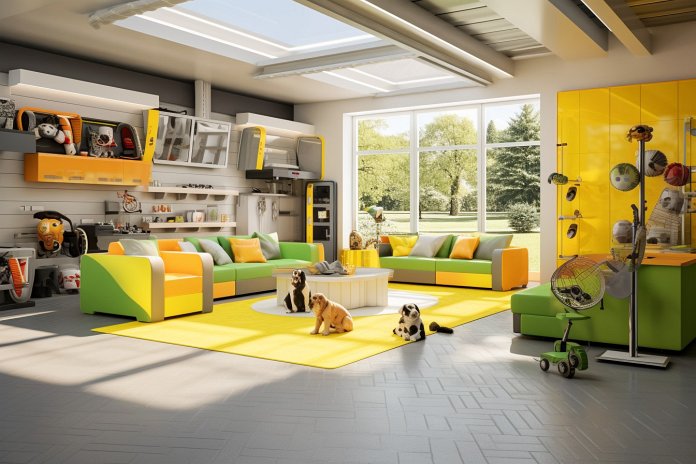
Dogs are highly resilient and adaptable, but they are not safe in all environments. Many people believe that putting their dog in the garage on extremely hot or cold days is a safer alternative to leaving them outside. However, keeping dogs in garages for extended periods of time can put them in danger. It is important to be cautious about leaving your dog cooped up in the garage.
Signs Dogs Shouldn’t Live in a Garage
Extreme temperatures can lead to health problems for dogs, such as heat stroke and hypothermia. While a garage provides shelter, it usually lacks temperature control, making it just as hot or cold as the outside. Dogs can also feel the effects of extreme heat in the garage, and in the winter, snow and ice can lower the temperature even further.
Body Language
Dogs use body language to communicate, and there are signs that indicate if your dog is unhappy living in the garage. These signs include barking, whining, ears dropping, low tail carriage, dropped ears, and averting eyes.
Other Signs
Other signs that dogs shouldn’t live in a garage include being susceptible to extreme temperatures, injuring themselves on equipment or tools, and accessing toxic materials.
History of Dogs Living in Garages
In the past, it was common for dogs to be brought into the garage from outdoors on hot or cold days. However, more people now consider their dogs part of the family and have them living inside the home. Garages are not suitable places for dogs to live as they lack temperature control and can be dangerous due to the storage of chemicals and tools.
Science Behind Dogs Living in a Garage
Dogs are adaptable, and they can adapt to living in a garage as long as they are given a safe space. Creating a closed-off area, adding a fan or space heater for comfort, providing enough food and water, and giving regular potty breaks and exercise can make the garage a safer environment for dogs.
Having Your Dog Living in a Garage
Leaving your dog in the garage for extended periods of time can lead to neglect. Dogs need social interaction, affection, and attention to stay happy. Regular exercise, bathroom breaks, and keeping them away from harmful substances and items are important for their well-being. Ventilation is also crucial, and windows and doors with windows can provide light and fresh air for dogs in the garage. Additionally, ensuring they have food and water is essential.
“Your dog’s well-being should never be left in the garage.”

Tips & Things to Know
1️⃣ Extreme temperatures can be dangerous for dogs living in a garage. Without temperature control, the garage can become too hot or too cold, leading to heat stroke or hypothermia. It’s important to provide a suitable living space for your dog.
2️⃣ Pay attention to your dog’s body language to determine if they are unhappy living in the garage. Signs such as barking, whining, dropped ears, and low tail carriage may indicate discomfort.
3️⃣ Proper care and attention are essential for dogs living in a garage. Ensure they have access to food, water, regular potty breaks, exercise, and social interaction. Leaving them in the garage for extended periods without meeting their needs can lead to unhappiness and neglect.
Frequently Asked Questions, Answered ✅
1. What are the dangers of leaving a dog in a garage during extreme temperatures?
– Leaving a dog in a garage during extreme temperatures can lead to health problems like heat stroke and hypothermia.
2. How can you tell if your dog is unhappy living in a garage?
– Signs of unhappiness in a dog living in a garage include barking, whining, dropped ears, low tail carriage, and averting eyes.
3. What are some other signs that dogs shouldn’t live in a garage?
– Other signs include being susceptible to extreme temperatures, injuring themselves on equipment or tools, and accessing toxic materials.
4. What are the potential dangers for a dog living in a garage?
– Potential dangers include exposure to extreme temperatures, access to toxic chemicals, and the risk of injury from tools or equipment.
5. How can a garage be made safer for a dog to live in?
– To make a garage a safer environment for a dog, a closed-off area like a kennel or corral can be created. Adding a fan or space heater for temperature control, providing food and water, and ensuring regular potty breaks and exercise are also important.